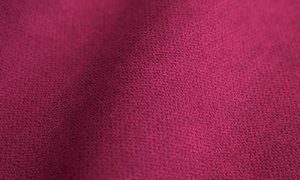Is Chenille Fabric Good for Upholstery?
22nd July, 2023
When it comes to upholstery fabric, one question that often arises is, “Is chenille fabric good for upholstery?”
Chenille fabric is well loved (we included) by homeowners and interior designers because of its softness and toughness.
In this blog post, we will examine the characteristics of chenille fabric in this post and determine whether it’s a viable upholstery fabric option.
What is Chenille Fabric?
Where does the word “Chenille” comes from anyways? The word “chenille” is derived from the French word for caterpillar, which is a nod to the fabric’s fuzziness, kinda resembling caterpillar fur.
It is normally made from a combination of cotton, silk or even rayon and wool, woven together to create a soft pile on the surface.
Why Use Chenille for Upholstery?
Comfort
The comfort of chenille fabric is one of the main factors contributing to its popularity for upholstery and that is because of the fabric’s distinctive design and opulent feel making it a wonderful option for furniture.
Chenille fabric gives a luxurious touch that improves the general comfort of your seating or softness of your curtains.
Durability
Chenille fabric is robust and resistant to fraying or ripping due to its woven weave.
This feature guarantees that the padding will resist frequent use and keep looking good for many years, however and very important to remeber, it is crucial to remember that the fabric’s particular fibre blend might affect how durable a cloth is.
For example, a blend of cotton and polyester fibers, will add the softness of the cotton with the strength and durability of polyester, or with a blend of silk and rayon fibers, offering a luxurious feel, delicate appearance, and improved resistance to fraying.
Stain Resistance
Stain resistance is an important factor to take into account while choosing upholstery fabrics.
Chenille fabric has a good stain resistance, especially when treated with a protective finish making it easier to clean spills and stains, ensuring that your furniture remains looking fresh and beautiful.
Designs
There are many options available to fit various interior styles and personal tastes thanks to the broad variety of colours and patterns available in chenille fabric.
You may pick a chenille fabric that matches your existing décor or stands out in your room, from bright and colours to more simple and muted ones.
Also, the fabric’s soft texture gives any design scheme depth and richness, boosting the furniture’s overall aesthetic appeal.
Versatility
Probably the biggest advantage is its versatility.
It can be used to cover a variety of furniture items, such as headboards, ottomans, chairs, couches and many more.
Not only that but it also complements a variety of upholstery designs, from traditional to contemporary making it a flexible solution for both homeowners and interior designers due to its capacity to adapt to various design preferences.
Affordability
Depending on the fabric’s quality, the combination of fibres used, and the complexity of the pattern, chenille fabric is offered at different pricing ranges.
There are less expensive choices that offer outstanding quality and value for money in addition to higher-end chenille fabrics, which may be more expensive.
Is Chenille Fabric Good for Upholstery?
Yes, we can confidently recommend chenille fabric for upholstery projects!
From a combination of softness, durability, versatility, and aesthetic appeal, it makes a popular and reliable choice for customers looking to enhance the comfort and style of their furniture pieces.
Frequently Asked Questions
Adding Comfort to Your Home With Chenille Fabric?
How to Pick Your First Upholstery Fabric for Furniture?
Why Durable Upholstery Fabric is a Must for Long-Lasting Furniture
Visit us at UK Fabrics Online!
If you have any questions, email us or leave a comment here.
Hope you enjoyed this one.
Thank you!






Hello, My sofa is wider than upholstery fabric. Can I recover with chenille using the length of the fabric longways or will that make the nap look strange. I’m a sewer but have no upholstery experience. Thanks
Hi Maxine,
Thank you for your comment!
You can still use chenille to recover your sofa if it’s wider than the fabric. One thing to keep in mind is you should consider the width of the fabric and how it might affect the appearance of the chenille’s nap. You might want a specific look or appearance and that could play in your favour.
Boottom line, it is not common to intentionally use different nap directions on a single upholstery project, as it can indeed result in an odd or inconsistent look.
Chenille is known for its soft texture and can exhibit noticeable changes in appearance when the nap direction is not consistent so we wouldn’t advise it if you are looking for a neat and well-finished result.
Let us know if you have any more questions!
Best regards,
UK Fabrics Online.
I found a couch I really like but the upholstery is chenille. I have a small dog and wonder if this material would be a mistake?
Hi Joanne,
It can be quite difficult to buy upholstery fabric or furniture with small pets in mind. The standard durability test for an upholstery fabric, is a Martindale Rub Test which you can read more about here.
In general a fabric with a higher Martindale Rubs Score will be more durable than one with a lower martindale rub score. However it’s not quite as straight forward as that with opet claws, where you also have to consider whether there’s anything for the pet to grip onto. In my own experience, my cats have really struggled to get their claws into my velvet sofa, whereas another chair with a larger weave they’ve managed to some damage to.
From our chenille fabrics; the Chenille with the more pronouced weave does have a lower Martindale rub score, which indicates that the raised fabric of chenille means it’s more likely to get caught.
https://ukfabricsonline.com/distressed-chenille-fire-retardant-upholstery-fabric – 20,000+ rubs
https://ukfabricsonline.com/soft-chenille-fire-retardant-upholstery-fabric – 35,000+ rubs.
Hope this has helped.